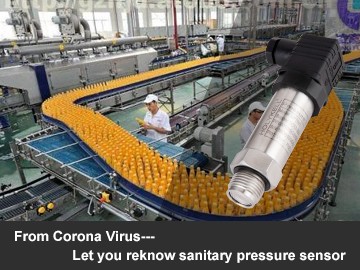Let you reknow sanitary pressure sensor in Holykell
From the beginning of 2020, we experienced a global epidemic, and until now the impact of the new corona virus has not completely dissipated. After the impact of this epidemic, our understanding of health has taken a new height. Illness comes from the mouth, so to prevent the disease, a healthy diet is the key. Therefore, this year's position of sanitary pressure sensor in the beverage hygiene industry has once again reached a new level.
The sanitary pressure sensor stands out in the beverage monitoring industry because its design and manufacturing standards are implemented in accordance with cleanliness and safety. We know in the beverage industry, product contamination can lead to product loss and harm to end users. Therefore, the health department requires the industry to meet the 3A hygiene standard during production. So how does it achieve standard hygiene measurements?
Prevent pollution
The sanitary pressure sensor is designed with a 316L SS flash diaphgram, the contact surface is very smooth, and there is no porosity and seamless. When the flat membrane contacts the measuring medium, it will not cause any pollution to the medium. And it will not adhere to any residues to cause microbial countermeasures. , Which brings pollution to the second measurement.
Prevent corrosion
Reactive materials are susceptible to corrosion. Corrosion will cause pitting, which will cause pollutants to be buried in the tested beverage, causing immeasurable losses and injuries. Therefore, the sanitary sensor uses a non-reactive substance of whole body stainless steel, which is extremely resistant to corrosion and does not give any opportunity for pollutants.
Installation design
Most static level sensors adopt submersible installation, but it is not applicable in the health industry. The mechanical structure of the sensor infiltrated in the beverage will bring the chance of contamination, so in order to meet the 3A standard, the sanitary sensors are installed by flat film or clamp mounting type.
Cleaning method
To increase process efficiency, it is best to be able to flush the system between runs without having to remove the sensor. This is called "clean-in-place" or CIP. Sensors that require manual cleaning and inspection increase turnaround time between batches and increase labor costs. This increased handling may also lead to an increased risk of contamination.
After this lesson from the epidemic, the awareness of enterprises and consumers on hygiene will continue to increase. The development of sanitary pressure sensor will further improve usability. As the beneficiaries of these beverage-specific sensors, we will usher in a leap forward in hygienic sensors.






